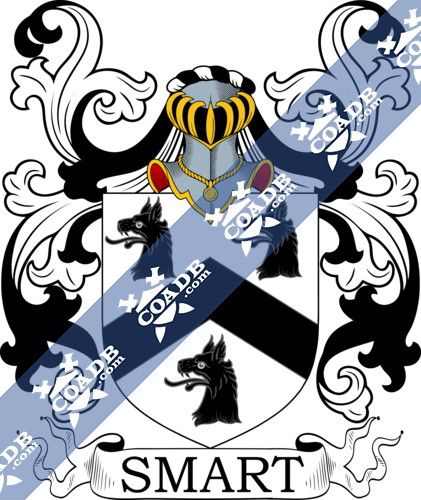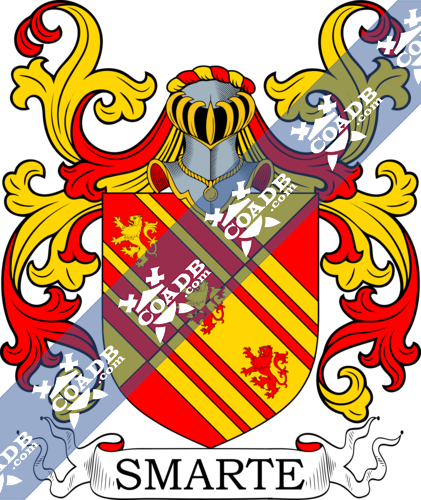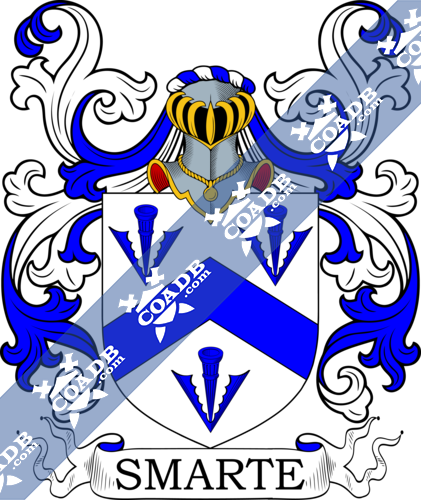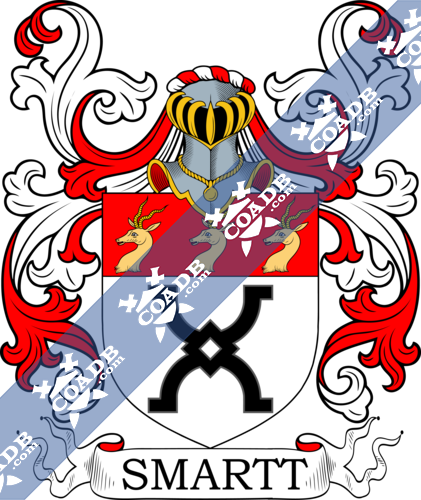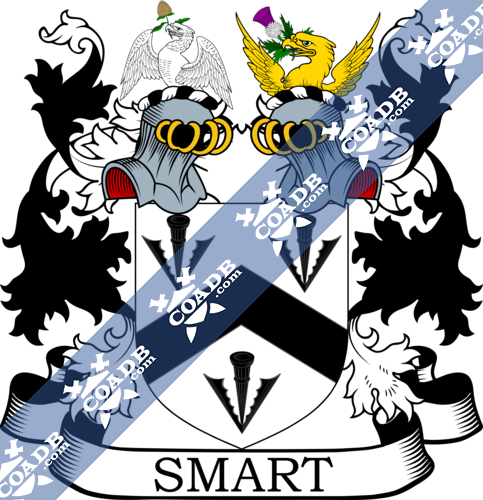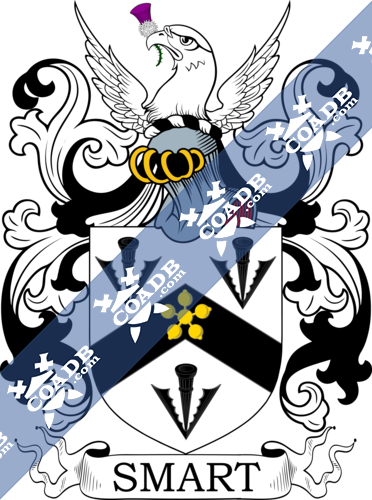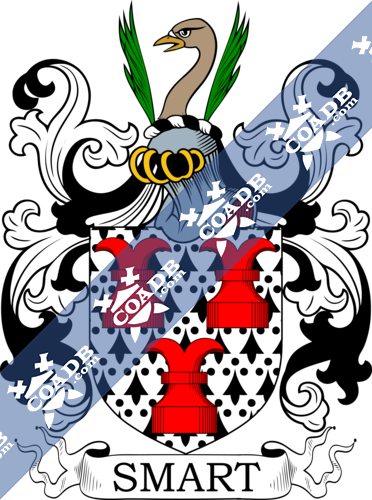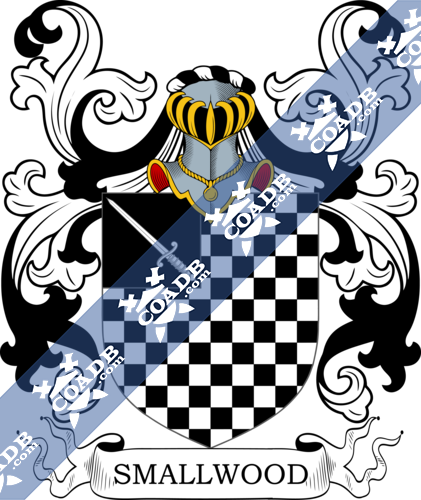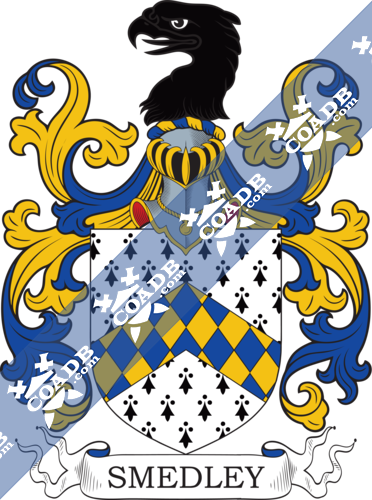Smart Family Crest, Coat of Arms and Name History
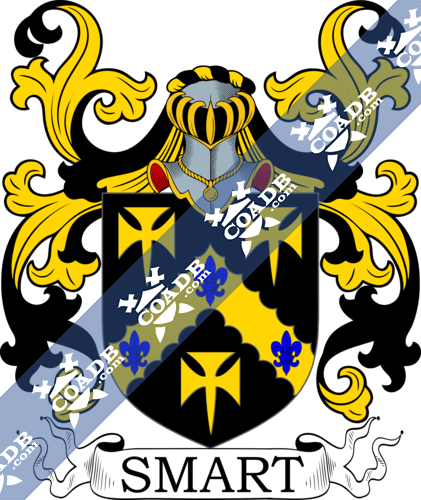
Smart Coat of Arms Gallery
Don’t know which Coat of Arms is yours?
We can do a genealogical research. Find out the exact history of your family!
Learn MoreSmart Origin:
England
Origins of Name:
The Smart surname derives from either one of two origins. A medieval nickname given to those who were active or brisk, from the Middle English word “smeart” which means quick or prompt. Old English defined the word “smeart” as stinging or painful and derives from the word smeortan meaning “to sting”. It could also come from being used as an occupational description for someone who was repairman, handyman or similar. Early surnames would often be used to describe a person, their occupation or as a nickname, many of which would be considered offensive by today’s standards. The surname Smart is common and extensively found in England, Scotland, and Wales.
Variations:
More common variations are:
Smartt, Smairt, Smarte, Smarto, Smarti, Smarta, Smarty, Smarat, Smarrt. Smarwt
History:
England:
The Smart clan was said to be medieval lords in Suffolk and held that title from ancient times, possibly even before the Norman Conquest.
When William the Conqueror invaded England, many English names were replaced with French personal names. After more than a century, surnames began to be named after saints of the Christian church. The Smart surname was found prior to the Norman conquest of England as well as after.
The first recorded history of the surname Smart in England was that of Lifwinus Smart in 1180 in the archives of the Cantebury Cathedral in Kent. Later, William Smert in the Tax Rolls of Worcester in 1275.
Henry Smert, a Scotsman, who was a prisoner of war was released to find ransom of himself and others in 1422. Many times if a prisoner was not able to pay a ransom, the prisoner was released to be able to gather funds to pay the ransom.
In 1635, William Smart would sail for the New World from London aboard the ship “Thomas and John” and land in Virginia. Another known recording was the christening of Benjamin Smart in 1642 at St. Benet Fink in London.
The surname Smart is the 353rd most common name in Great Britain. The highest concentrations are in Fife, Gloucestershire, Moray, and Rhondda Cynon Tafff.
Scotland:
The first record of the surname Smart appears in Scotland in 1597 for John Smart; however, the Smart surname in Scotland goes as far back as the highlands of northern Scotland. The surname in Scottish derives from “smertae”, an ancient people that lived around Inverness and Loch Ness. The Smart clan belonged to a tribe that was under the protection of the much larger McKenzie clan.
A variation of the name, Smert was recorded in 1358 for John Smert who was charged for violating parole. In 1376 another variation, William Smert was a tenant living in Telny in the barony of Abirdoure, Fife.
Smert is still a commonly used pronunciation of the name in Scotland.
Crest Origin:
Smart Today:
42,000 in Nigeria
29,000 in the United States
18,000 in England
7,000 in Australia
6,000 in South Africa
Notable People:
Amy Smart (born 1976), American actress
Andrew Smart (born 1986), English soccer player
Christopher Smart (1722–1771), English poet
Sir George Thomas Smart (1776–1867), English musician J
Jeffrey Smart, (1921–2013) Australian painter
John Smart (c. 1740–1811), English painter
Richard Smart (actor) (1913–1992), Broadway actor and rancher
Richard Smart (MP) (died 1560), English politician and Member of Parliament
Reuben D. Smart (1832–1890), American politician
Blazons & Genealogy Notes
2) (London). Sa. on a chev. engr. betw. six crosses formée fitchée or, three fleurs-de-lis az.
3) (London, and Scotland). Ar. a chev. betw. three pheons sa. Crest—A demi eagle rising, wings disclosed ar. holding in the beak a burdock flower ppr. Another Crest—An eagle’s head betw. two wings or, holding in the beak a thistle slipped and leaved ppr.
4) (Trewhitt House, co. Northumberland). Motto—Virtus prae nummis. Ar. a chev. betw. three pheons sa. conjoined. Crest—A demi eagle rising, wings disclosed, in his beak a burdock ppr.
5) Erm. three chessrooks gu. Crest—An ostrich’s head betw. two palm branches ppr.
6) Ar. a chev. betw. three wolves’ heads erased sa.
7) Per bend sinister or and gu. on a bend double cotised three lions pass. counterchanged.
8) (West Chickerel). Ar. a chev. betw. three pheons az.
9) (co. Devon). Ar. a millrind sa. on a chief gu. three antelopes’ heads erased ppr. attired or.
10) (London, and Scotland). Ar. a chev. betw. three pheons sa. Crest—A demi eagle rising, wings disclosed ar. holding in the beak a burdock flower ppr. Another Crest—An eagle’s head betw. two wings or, holding in the beak a thistle slipped and leaved ppr.

